How to open an indie (book)shop
Neighbor Books, a new bookshop in the heart of McKinney, TX, recently celebrated their 'soft opening.' In partnership with Indie Shops, here’s a step-by-step on how we went from idea to launch.
Identify an owner/operator
The first step = the most-important step. We often hear ‘our town needs this!’ (our modern bookstore model), and our first response is to begin ideating together on who will own/operate with us. We received inbound interest that simply said: “Can we bring this to McKinney? I know someone that would be perfect to run it.” After a few intro calls & a site visit, we validated there was strong intent & eagerness to do this, the community was excited at the possibility, and that the operators would be great partners to launch a shop together.
Involve the city
On a preliminary site visit, we met the local ‘downtown development manager’, whose job it is to support local businesses & new initiatives. A person like this has their ear-to-the-ground on who’s moving, who’s looking for leases, and general ebbs/flows of the local market. Incentives are aligned here; they want new, thriving businesses to open, and spend their time supporting that effort in a non-biased, diplomatic way. After sharing the vision we were chasing, we had regular check-ins to see what spots were coming available or comings/goings around town.
Find the space
McKinney has an incredibly-high walkability score (of 91), which is typical of downtown Main Streets with existing retailers & nearby walkable residences. We look for ‘stroller traffic’ — do families hit the streets, grab coffee, pop-in shops, etc. or is this more of a drive-to destination where we’ll have to create foot traffic (less ideal)…
In a competitive real estate market like this, it can take many months and start/stops to find the right space. We chased 4-5 properties, meeting with owners for tours & hearing their rates/terms. Some were available but required extensive build-outs/configuration (outside our interest), another was ready-to-go but within a sublease arrangement, and we have a couple swings-and-misses. But, we identified the ideal location simply by walking in stores & monitoring foot traffic — where did people naturally go, what was being under-utilized — in this case, a 5,000 sq ft anchor just off the ‘square’ with a mezzanine level. However, there was an existing tenant.
Wait for green lights
We fixated on this ‘perfect space’, and began entertaining the other sub-lease option for a year or two until it hopefully opened up. Then, we found our way to the building owner (via his leasing agent) who notified us the existing tenant’s lease was expiring & they were in the midst of a re-negotiation. Green light! We flew out for a site visit, pitched the vision, and left the ball in his court on whether to go with us or stick with the existing tenants. We wound up negotiating a flat-rate, tiered multi-year lease with a corporate guaranty and favorable renewal options. Once a lease was signed, we had 60-days until the first month’s rent was due for the existing tenant to vacate & rush along the required build-out/fixtures.
Start & steer build-out
We used a local carpenter to retro-fit existing shelves and build new fixtures. This had a 6-week lead time, which allowed for simultaneous painting, furniture delivery, and landlord-provided improvements like bathrooms & lighting. We’ve used a shelving manufacturer in the past for other stores, but in this case, being able to improve existing shelves, choose/match paint, and have it feel like a custom-install at a competitive price was the obvious choice.
Before / after:

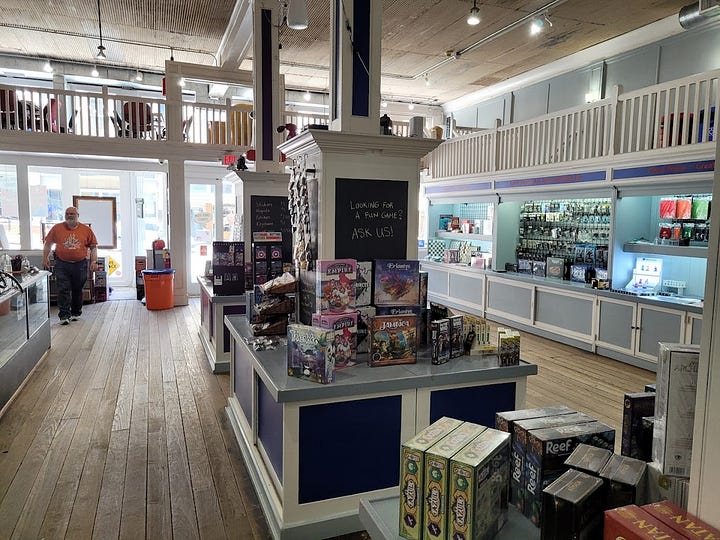
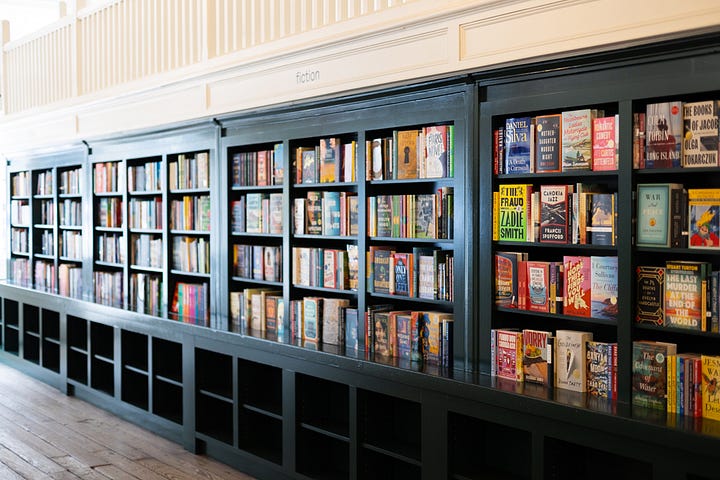
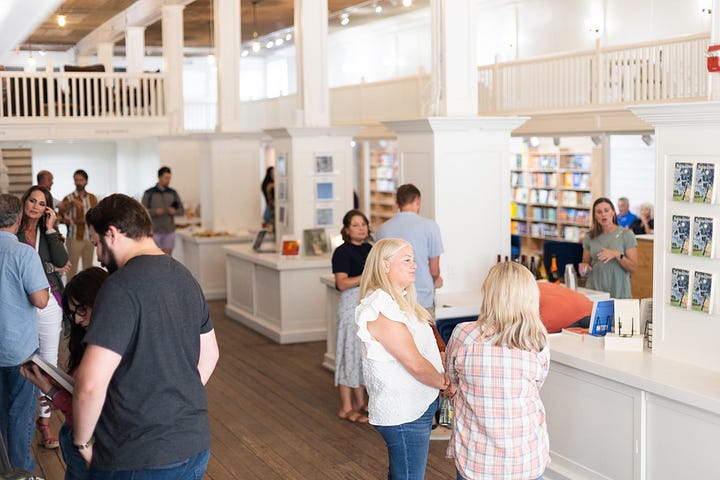
Introduce brand & marketing
During the build-out period, we led the operators through a design sprint with our fractional designer to identify a brand, color scheme & strategic positioning. Once we had a brand, we designed a custom e-commerce site and launched social & email sign-ups. We used these channels to keep early interest informed on timeline and start to build anticipation. Instagram was used for near-daily updates, photos of the space coming together, pitching membership, online sales, etc.
Where we landed:

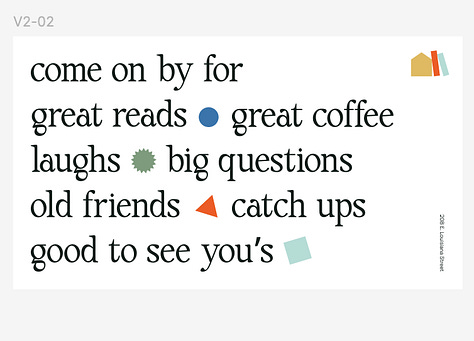
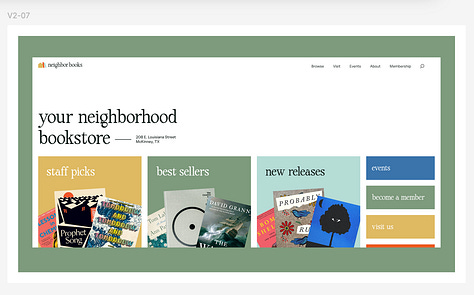
Launch membership
Key to our model is membership — both as presales and ongoing everyday signups in-store. Members save 20% on every purchase, 40% on a changing list of weekly bestsellers, and get free in-store drip coffee from a local roaster. Membership does the most to establish our spaces as ‘community hubs’ which are full of families, morning meetings, pop-ins, and browsers, all enthused by coffee & books. In an Amazon-world, it moves us ‘first in line’ instead of competing on every transaction.
During pre-launch, we introduced a ‘founding membership’ at $2,500 and a ‘5-year membership’ at $1,000 to help offset the up-front costs of opening, primarily spent on fixtures and prepping the space to open. Fifteen families purchased the founding membership, and eleven purchased the 5-year option. Additionally, ~150 annual memberships were sold at $99. Total membership revenue pre-launch was ~$65k.
Roll-out tech
Our own cloud-based point-of-sale system drives in-store shopping/operations, and our custom web/mobile channels create a physical-meets-digital, omnichannel experience. The point-of-sale is the data ‘gasoline’ that powers the physical/digital experiences: products, inventory levels, customer accounts, purchase orders, messaging, etc. Once this was live, we began loading baseline inventory/purchase orders to update browsable lists on the website & launch online shopping. We also began white-labeling our iOS platform for Neighbor, built as a search-for-anything tool that syncs your member pricing and allows for pickup/delivery. With the discounts of membership, this is our Amazon-esque approach to local — high convenience, competitive pricing, quick delivery, all at your fingertips.




Stock the shop
Inventory decisions should be driven by the local operator, so that their store is an extension of their interests & favorite reads. Inventory types can be generally split into three buckets:
Perennial sellers - we provide lists & sales data from other stores to guide initial orders; e.g. these are the books we know will sell well.
Staff picks - we allow full autonomy for the operator to curate the books they want their store to have in whatever categories most interest them. The books that booksellers love most will sell the most! We also provide guidance on sales-by-category to suggest where to stock more heavily and where to go lighter.
Must-haves - there’s a cut of books that bookstores should just need to carry. Classic fiction, selections across nonfiction categories, and then more regional choices like religion or local interest.
(Soft) open!
After shelves, furniture & inventory all arrived & were staged, we held a ‘founding member’ happy hour preview event and then ‘soft opened’ the next morning. A soft-open allowed us to begin learning faster — how do customers use the space, what products are selling, what are ideal store hours — and then iterate/expand inventory, layout, staff, etc. ahead of a ‘grand opening’ a couple weeks later. While there’s a tinge of ‘wait until it’s perfect’, we tend to lean heavily on data & metrics to drive these improvements, so we wanted to prioritize getting small bits of data sooner.
Finally seeing the space filled with neighbors and excited shoppers was especially gratifying and reminded us, “This is why we do this; for spaces like this to exist in the world.” I lost count of the # of times we heard, “this is what we’ve been missing here.” The culmination of this whole process — from build-out to brand to marketing to tech to launch — generated first-weekend sales of $23k.
Here’s to many more moments & years to come for this community! Small is beautiful.
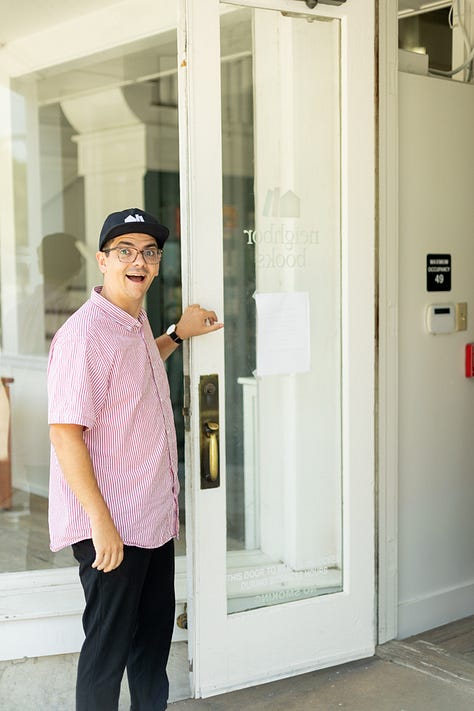
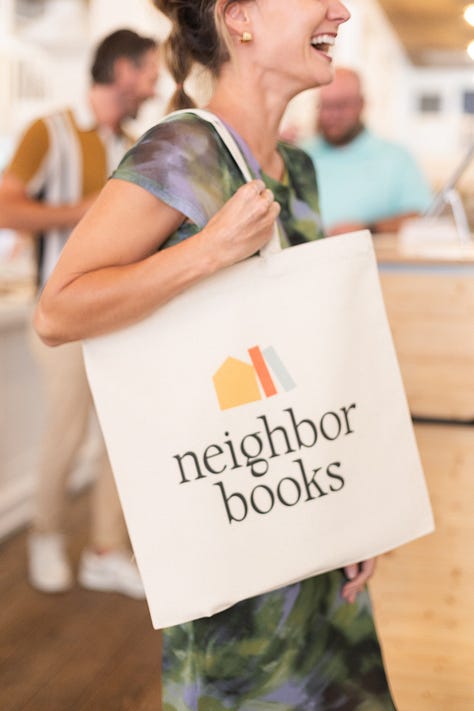
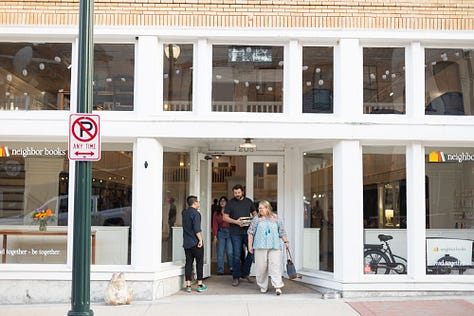
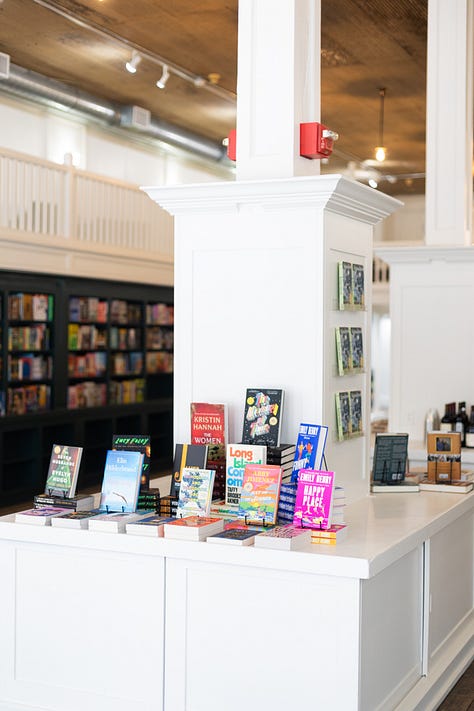
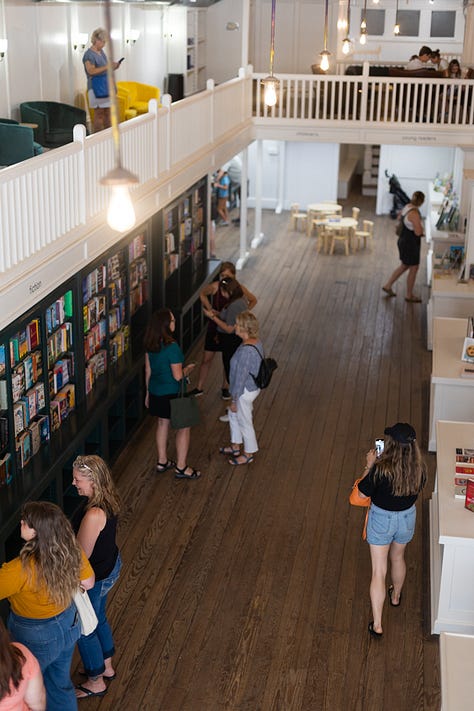
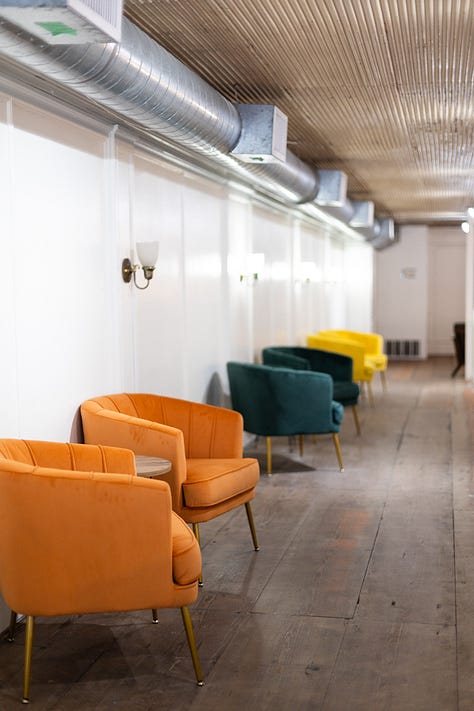
Follow along: @neighborbookstx
=====
We’re actively partnering with owner/operators in new cities/neighborhoods who share a vision of bringing these third places to their communities. If you’re interested in starting a shop, buying/selling a shop, or simply using our POS/membership/e-commerce platform, we’d love to meet you! Learn more at indieshops.org.
—
Jonathan Robinson
Founder, Indie Shops

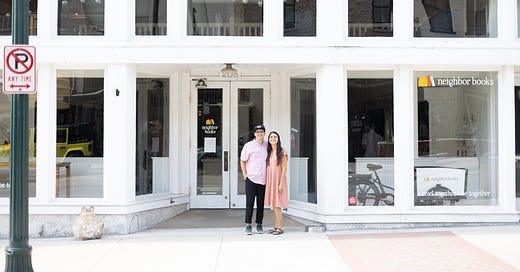


This is awesome!